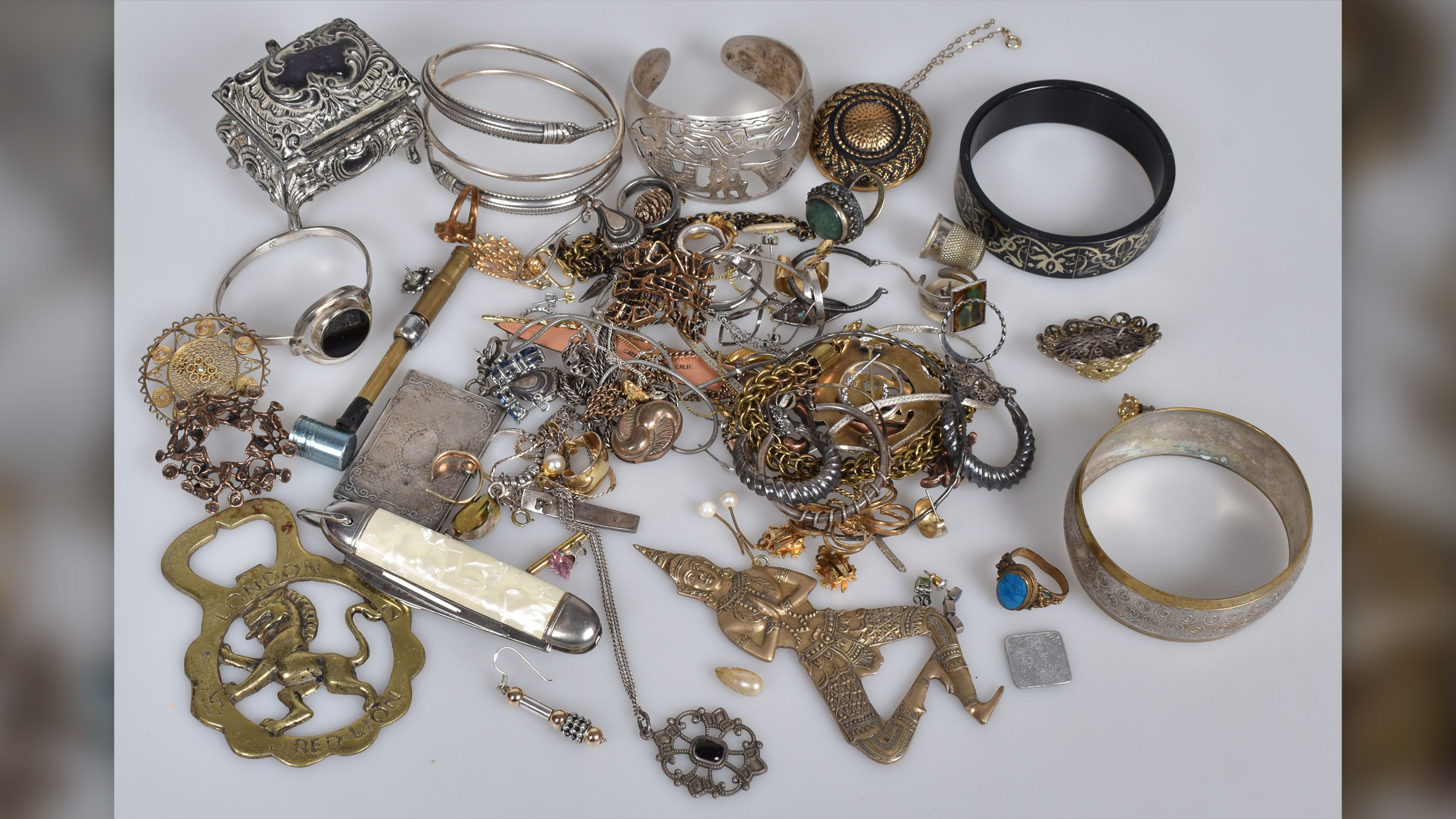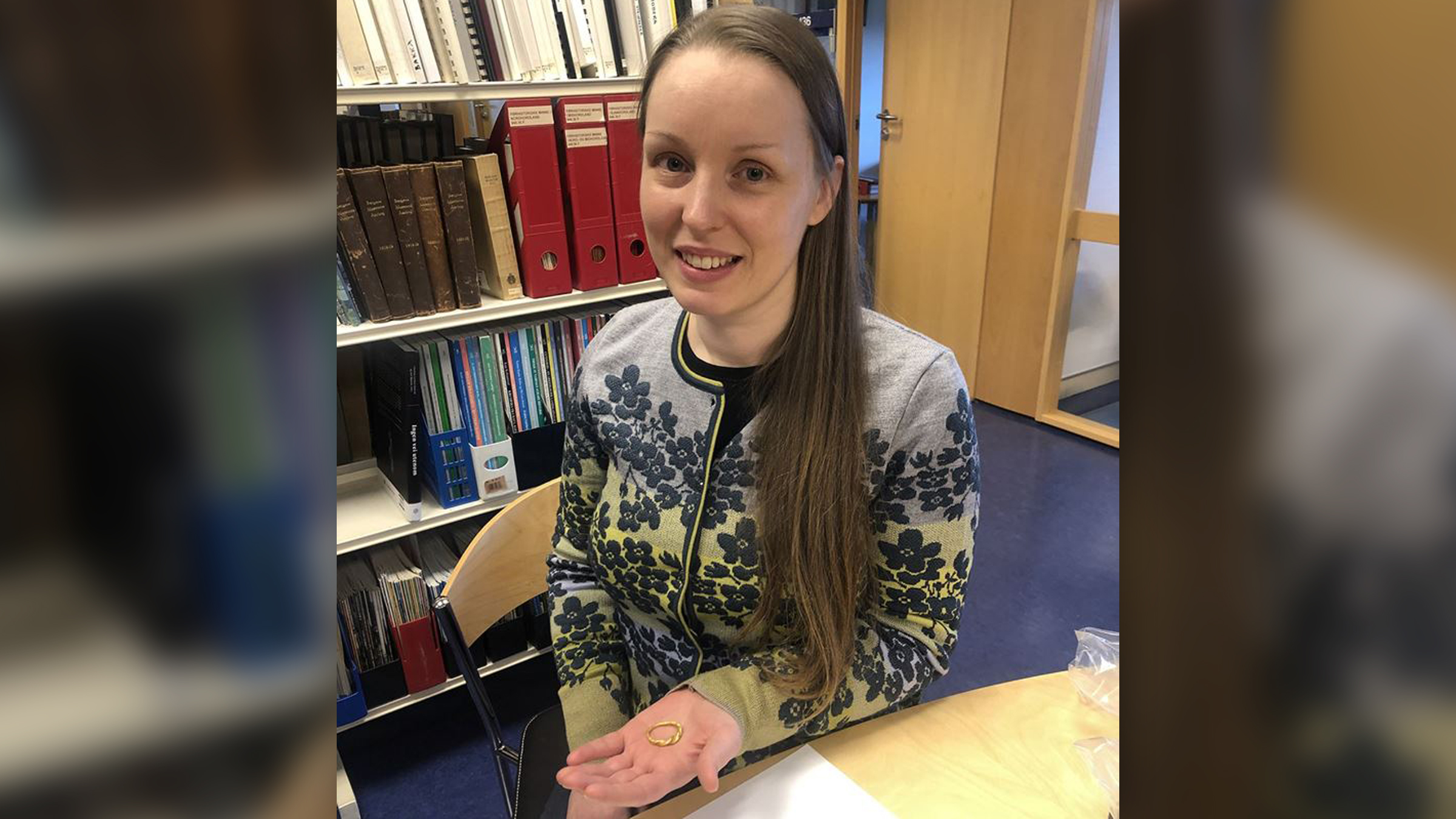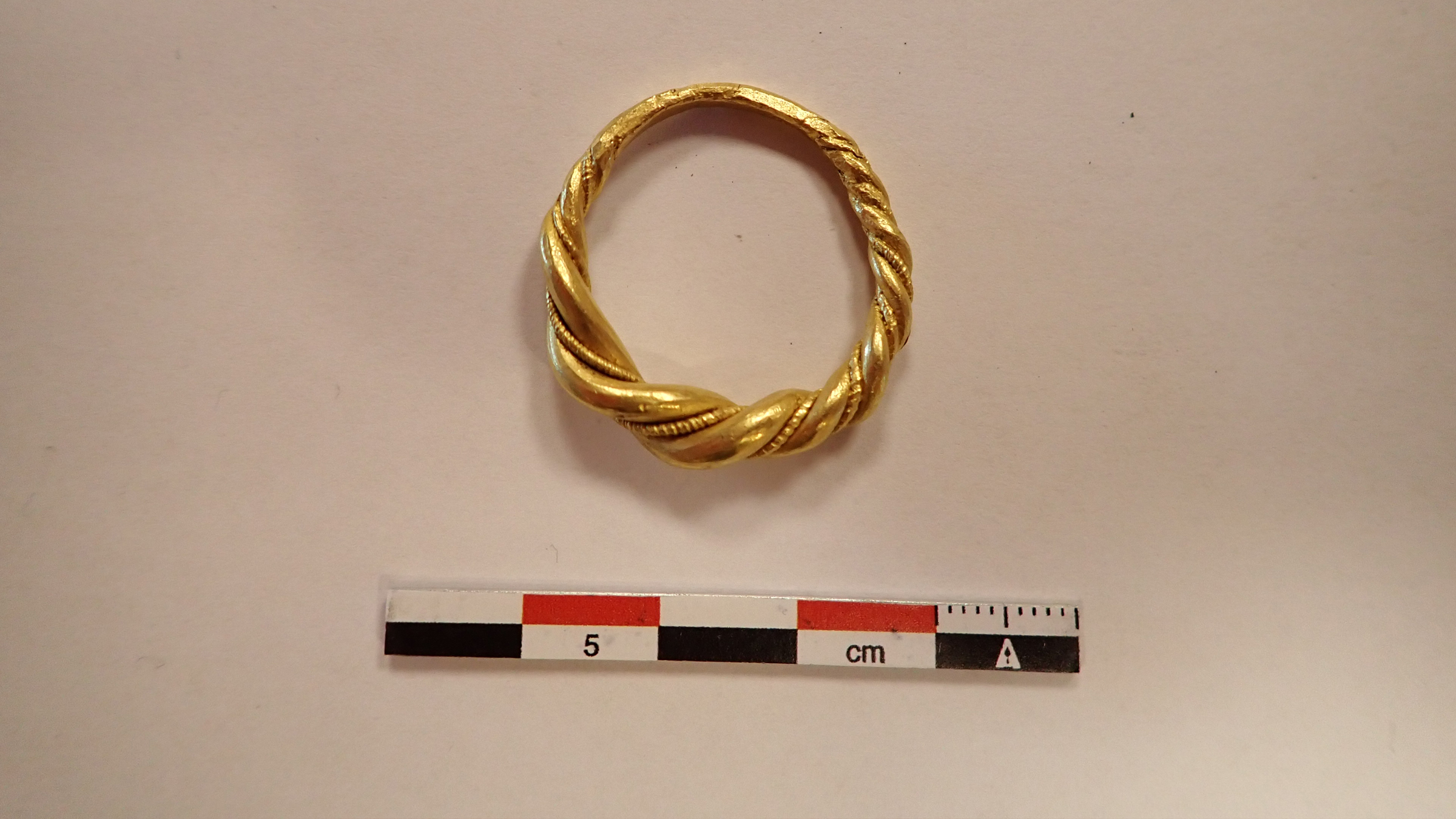Gold Viking ring unexpectedly found in stash of 'cheap jewelry' from online auction
The ring likely belonged to a powerful Viking chief.

A large, gold Viking ring crafted from twisted metal strands turned up in a very unexpected place: a heap of cheap jewelry a woman in Norway purchased at an online auction. Archaeologists think the ring may be more than 1,000 years old and once belonged to a powerful Viking chief.
Mari Ingelin Heskestad, who lives in western Norway, told the Bergensavisen, a daily newspaper in Bergen, that she'd found the gold ring among several pieces of cheap jewelry and trinkets that were being auctioned together online.
She said she'd bought the bundle, packed into an old cardboard banana box, because she was interested in one of the other pieces. But when she received the assortment in the mail, the ring immediately stood out.
"It was bright and gold. It looked very special, was roughly made," Heskestad told the newspaper in Norwegian. "I reacted to it being so heavy. It glistened and stuck out among the other jewelry."
Related: Treasure hunter finds gold hoard buried by Iron Age chieftain
After showing it to her family, Heskestad drove to the headquarters of her regional government, located in the city of Bergen in Vestland County, and showed it to archaeologists there. Once they analyzed the ring, the team confirmed from its distinctive style that it was a gold ring from the late Iron Age in Scandinavia (after about A.D. 550), and perhaps from the Viking Age (after about A.D. 700).
Experts at the University Museum of Bergen are now conserving the ring, and it will go on display there in a few months.
Sign up for the Live Science daily newsletter now
Get the world’s most fascinating discoveries delivered straight to your inbox.

Viking style
Archaeologist Sigrun Wølstad, a senior adviser for Vestland County's cultural heritage department, remembered Heskestad bringing the ring to the Bergen office in February. "It's a large ring that a man wore," Wølstad told Live Science. "One of the guys at the museum put it on his thumb."
Similar rings have been found before, in both gold and silver, featuring a twist of wide and narrow filaments of metal, Wølstad added.
Such rings were often found in Viking graves. It's possible that this ring had once come from such a grave but became mixed with other items, perhaps after the person who found it had died, she said.
Her office contacted the man who organized the online auction, and he told them he'd bought the ring, as well as other jewelry, in an antique shop in Norway, but that the prized item might have originated elsewhere in Scandinavia, such as Sweden or Denmark, Wølstad said.
It's almost impossible to scientifically date metal objects, but the style of the ring shows it was probably made during the Viking Age, between the eighth and the 11th centuries A.D. "It's not from the Norwegian Middle Ages, which is after the Viking Age," Wølstad said.
Gold was scarce throughout the region during the Viking Age, so the ring was likely made for a powerful Viking chief, Wølstad said.
"This is probably from the grave of a rich man," she said. "In the Viking Age in Norway, you don't have a lot of gold — most jewelry is silver. So it's not usual to find gold."

Heavy metal
The ring weighs about 0.4 ounce (11 grams), or about three times more than a simple modern gold ring, according to the news site Science Norway.
Based on photos of the ring, its style looks like previously discovered rings from other Viking-era finds and graves, said Unn Pedersen, an archaeologist at the University of Oslo who was not involved with the ring's finding. "It's from the Viking Age, of a specific type that has this combination of a thick and a thin rod that are merged and twisted," she told Live Science in an email.
Related: 2,000-year-old Celtic hoard of gold 'rainbow cups' discovered in Germany
Finger rings were rare in the Viking Age, and especially rings of gold, she said; and they could be more than mere ornaments and may have been used by people swearing oaths, for example.
Arm rings and necklaces could be also used to distinguish the members of hierarchies in Viking society. "Gold is connected to society's uppermost elite and was used to display wealth and to demonstrate status," she said.
It's also possible that people lower in a social hierarchy wore rings of the same style but in less-valuable metals, such as silver, bronze or copper. "Metals with different economic and social value were used actively to establish and maintain hierarchies," Pedersen said. "Gold was the most expensive metal, followed by silver and then copper alloys, and finally tin/lead-alloys."
Using highly similar items made of metals of different value meant it was easy to compare wealth and status, while the rings themselves might have served as gifts, she said.
"Gift-giving was important in Viking-age society and it is highly possible that the one who used a ring of gold made a similar ring of a less valuable metal and gave it as a gift to underline such differences," Pedersen said.
Originally published on Live Science.
Tom Metcalfe is a freelance journalist and regular Live Science contributor who is based in London in the United Kingdom. Tom writes mainly about science, space, archaeology, the Earth and the oceans. He has also written for the BBC, NBC News, National Geographic, Scientific American, Air & Space, and many others.









